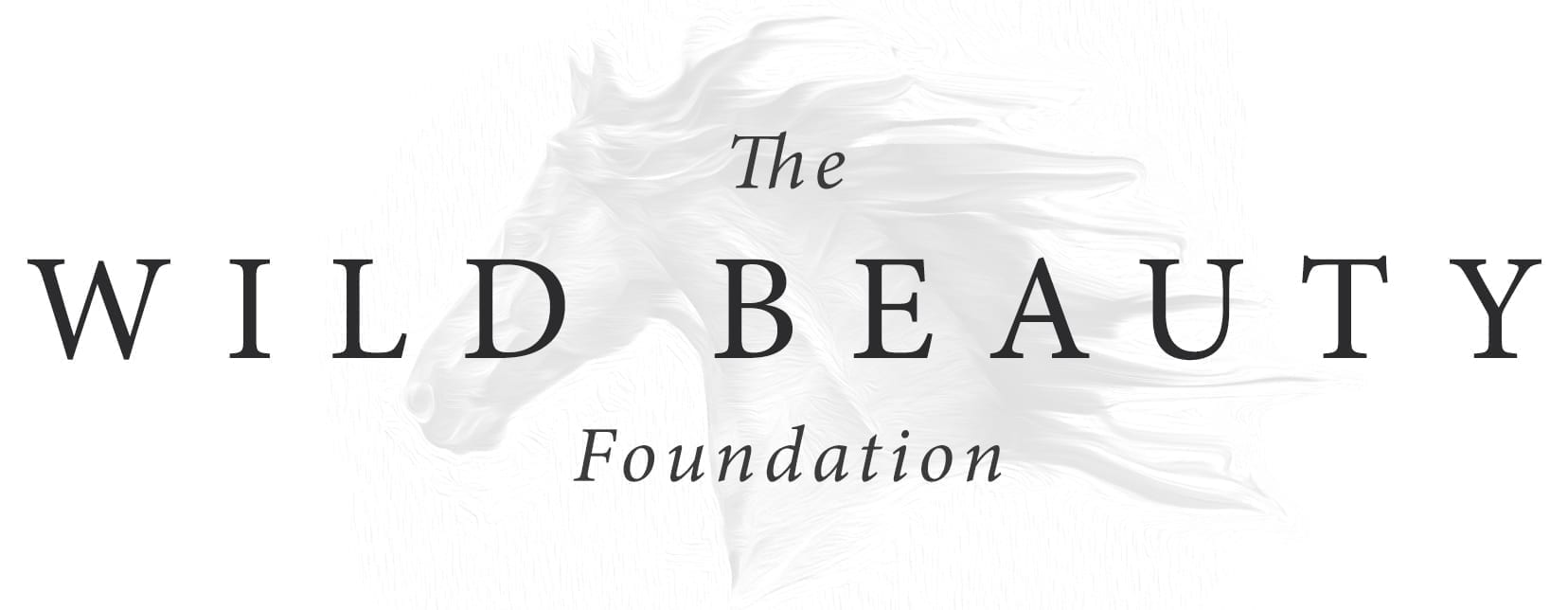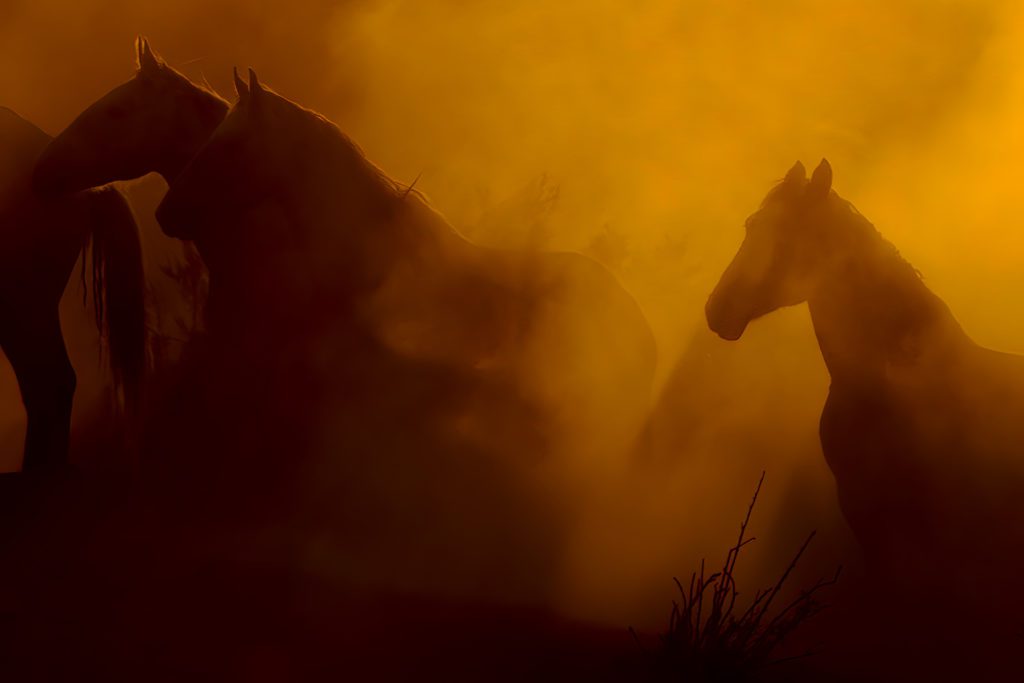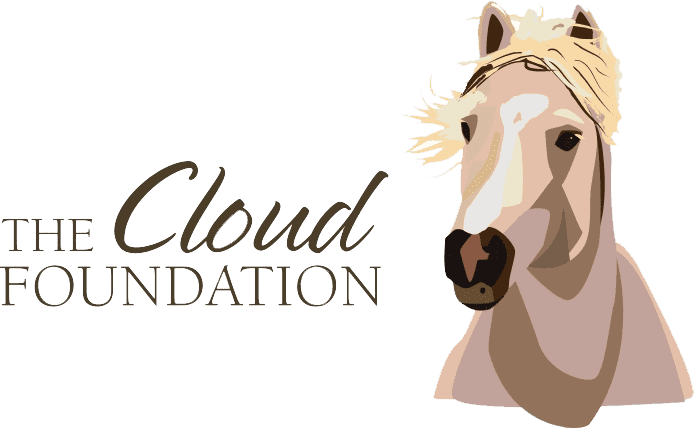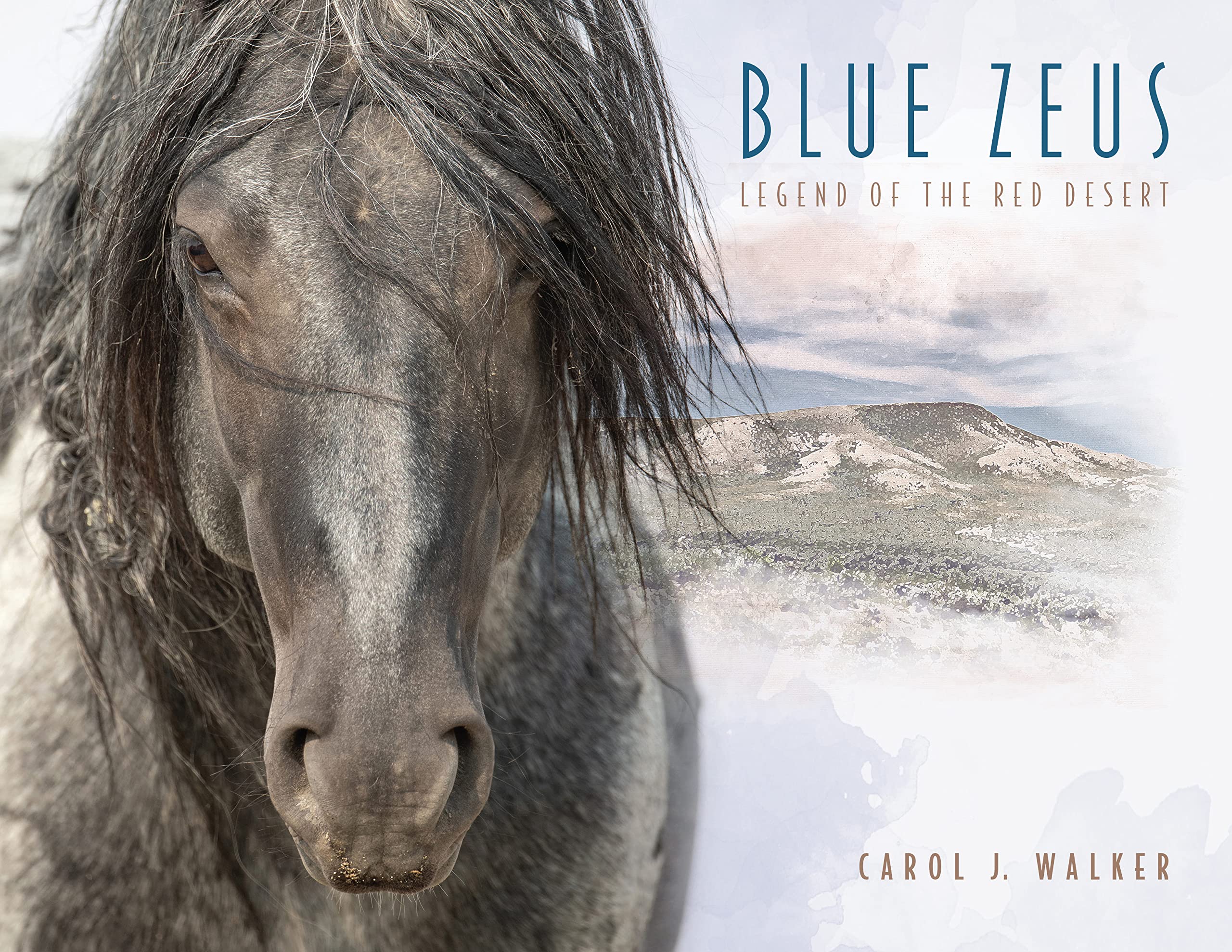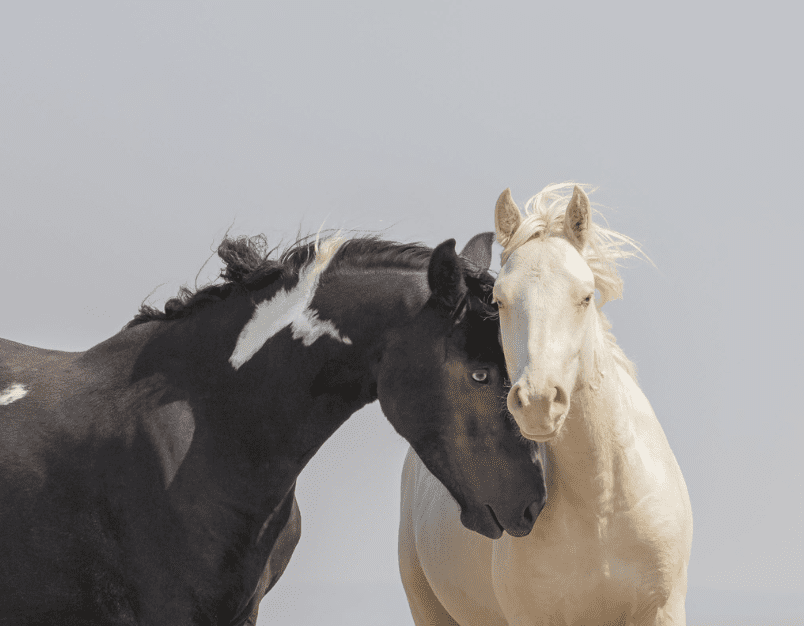THIS WEEK IN WILD BEAUTY: July 30th, 2022
The Wild Beauty Foundation welcomes you to the eleventh edition of our weekly newsletter!
Read the newest wild horse and burro focused headlines for the week of July 30th, 2022
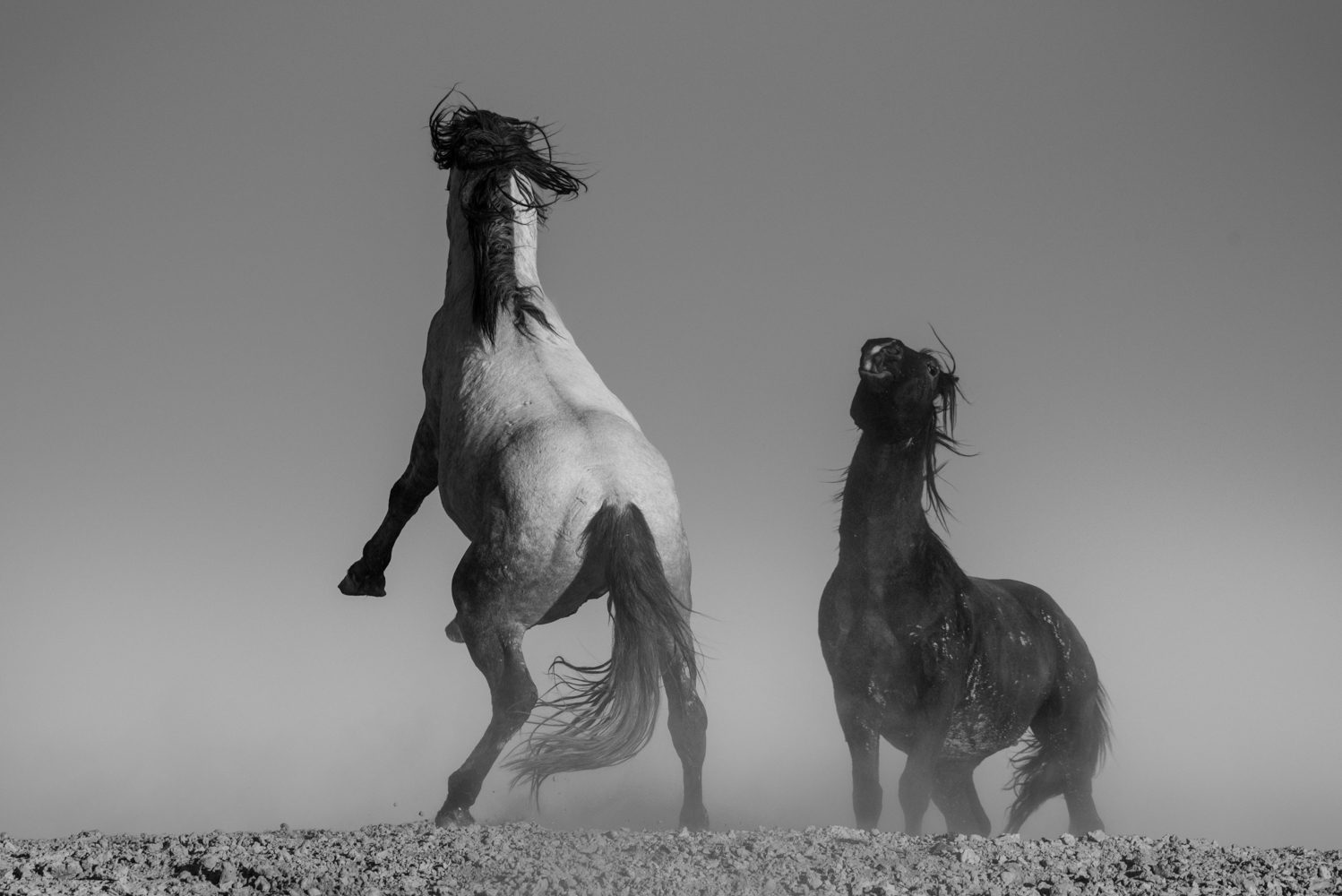
Photograph by Sandy Sharkey
Judge Denies Protection for Apache-Sitgreaves Wild Horses
Despite recent requests from wild horse advocacy groups, a federal judge in Arizona has ruled that the horses whom were rounded up by the U.S. Forest Service should not be returned to freedom; and that the horses are “unregulated livestock”, “feral”, and an “imminent threat” to other species.
This especially troubling ruling further promotes what WBF maintains is a false narrative.
It is widely known that horses have roamed free within this national forest for decades. During the hearing, the International Society for the Protection of Mustangs and Burros presented a newspaper clipping proving that wild horses were mentioned to have been living within the forest since at least 1918; more than 50 years before the Wild and Free-Roaming Horses and Burros Act was passed. Ultimately, the judge sided with the U.S. Forest Service and denied protection for these wild horses.
This is a tragic outcome for the Alpine, as wild horses and their families continue to be wiped out across the Western United States.
The Sand Wash Basin herd under a molten sunset from our upcoming WILD BEAUTY documentary
Piceance-East Douglas Roundup Becomes Largest in Colorado History
794 wild horses have been lost to our public lands in just two short weeks.
Last summer, the West Douglas roundup became the largest in state history after more than 450 horses were captured. Then, the Sand Wash Basin roundup in September took the top spot as more than 630 wild horses were rounded up. This month, another horribly historic number tops the record book after 794 wild horses were rounded up in the Piceance East Douglas HMA.
If we do not stand up and create change now, these numbers will only grow.
One year ago, we visited this beautiful state to film wild horses and their families for our upcoming documentary, WILD BEAUTY which will debut this fall on the festival circuit. The image above is from one particularly spectacular day at Sand Wash Basin, where hundreds of wild horses appeared before us during a molten sunset; galloping to water with their families. A true instance of wild beauty.
Today, wild horses are still under attack across the Western United States by the Bureau of Land Management (BLM), the federal agency tasked to protect them – which instead is wiping them out, and flagrantly violating the law enacted in 1971 to preserve them.
Shortly after we filmed this spectacular scene, we returned to Colorado for the horrific roundup of these same horses. We watched in terror as the helicopter descended. We stood by unable to do anything but film as they were stampeded, questioning the BLM about the changing litany of “reasons” they justified this “emergency roundup.” These moments are in our film, which will debut to the world very soon.
Now, the helicopters descend again upon the Piceance-East Douglas wild horses and their families in Colorado. Driving pregnant mares and newborn foals at a gallop for miles in the blazing July summer heat.
There is nothing “humane” about a helicopter flying at eye level at a decibel level we cannot even safely subject humans to, forcing these intelligent and emotional creatures into traps or driving them through fences. There is nothing humane about horses breaking their legs or necks trying to escape, or protect their families. How is this level of animal cruelty happening in 2022?
Enough is enough. The world will see what is happening very soon through our film – and in the meantime we are deeply grateful to the individuals and organizations who on the ground these past weeks documenting the terror at Piceance-East Douglas.
If you wish to see some photographs of what is occurring, check out Scott Wilson’s Facebook here: www.facebook.com/Wilsonaxpe
New Footage Released by The Cloud Foundation Shows Harsh Reality of Piceance-East Douglas Roundup
This week, The Cloud Foundation released exclusive footage showing the BLM violating their Animal Welfare Policy.
You can watch The Cloud Foundation’s full footage here.
A camera placed within the HMA shows pregnant mares and newborn foals being run to exhaustion by extremely low flying helicopters. We at WBF cannot believe how young some of the smallest horses in the roundup are. Not only this, but the rising temperatures in the triple digits during the roundup is a direct violation of the BLM’s Comprehensive Animal Welfare Program policies. There is absolutely no excuse to this inhumane treatment and we cannot let this practice continue in our country.
We applaud TCF for releasing this footage publicly to spread the truth about the BLM’s wild horse management.
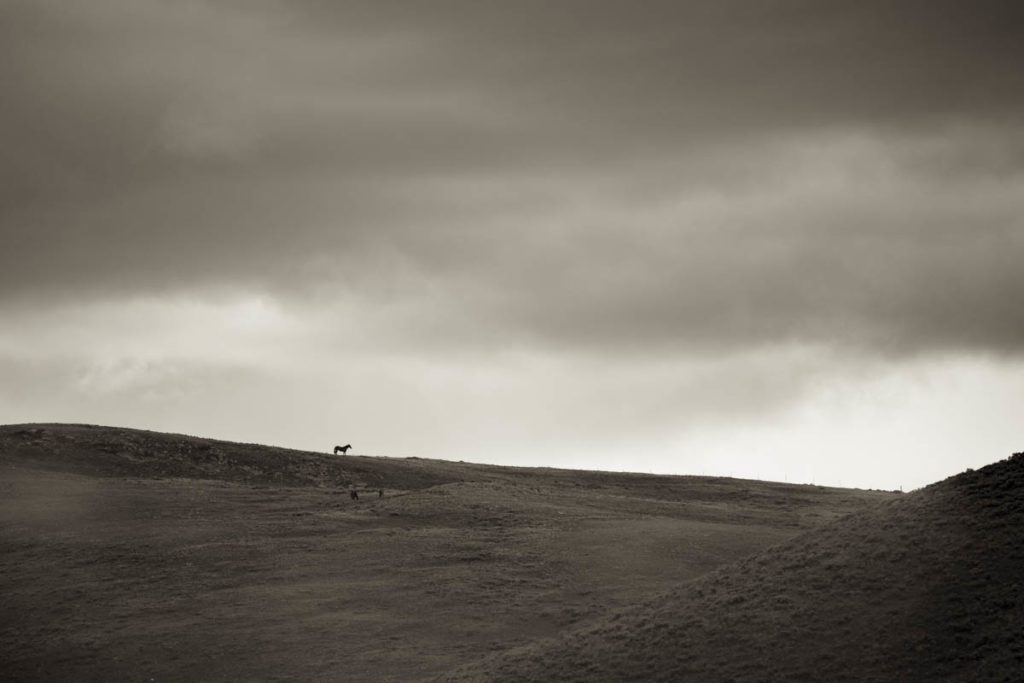
Photograph by Tori Gagne
This Week’s Call To Action
Urge Colorado Officials to Stop Inhumane Helicopter Roundups
This is where you come in. Now that you have seen TCF’s video evidence of the BLM running heavily pregnant mares and young foals in temperatures reaching up to 102 degrees, contact the officials below and hold them accountable for their actions.
*** Please call if you feel comfortable. Calls are more effective than emails. ***
Colorado State BLM Director, Doug Vilsack:
(303) 293-3700
Colorado BLM White River Field Office Manager, Bill Mills:
(970) 878-3800
Colorado BLM Director of Communications, Steve Hall:
(303) 239-3933
You can also contact the governor’s office and urge him to contact the State BLM Director in regards to this roundup.
The Office of Colorado Governor Polis
(303) 866-2471
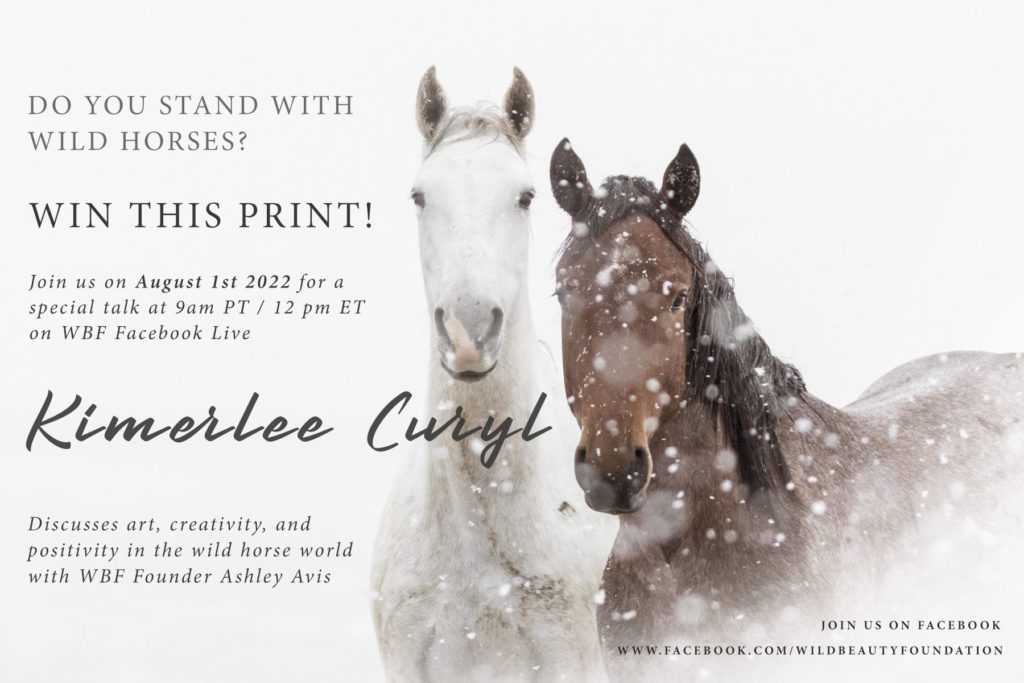
Join Us Monday, August 1st for a Live Facebook Chat with Kimerlee Curyl
This Monday, August 1st at 9am PT / 12pm ET WBF invites you to a Live Facebook Chat with our friend, Kimerlee Curyl to discuss art, creativity, and positivity within the wild horse space.
Visit WBF Facebook to tune in for this special conversation.
Kimerlee is a fine art photographer and wild horse advocate, and we continue to be inspired by her passion for saving our wild world. In addition to this live chat, Kimerlee is hosting an exclusive giveaway on Instagram of her beautiful 8×12 print, “Snowy”. You can find more information about how to enter the giveaway here!
Read the story behind this image below.
______
“Snowy” by Kimerlee Curyl
July 2021. Snowy was captured during the tragic round up that stripped the Onaqui of 60+% of the horses here.
She had been chased by helicopter into a trap site to be removed from her homeland forever. Once trapped, the mares and stallions are separated, families are fractured and torn apart, forever.
Snowy was not settling well.
She wanted no part of this chaotic operation, as no wild horse ever does. And, as any strong female knows, often times we need to take matters into our own hooves. And that is what this beautiful, resilient, strong creature did. From a stand still this stunning mare jumped and cleared a six foot panel and took her freedom back.
Capturing this soft, quiet moment with her last October one very cold, yet snowy morning was a special gift I could not have dreamed up, its one I’ll never forget and will forever be etched on my heart.
May her will and desire to be free – inspire you.
______
This Week: Erin & Alamo’s “Mustang Diary”
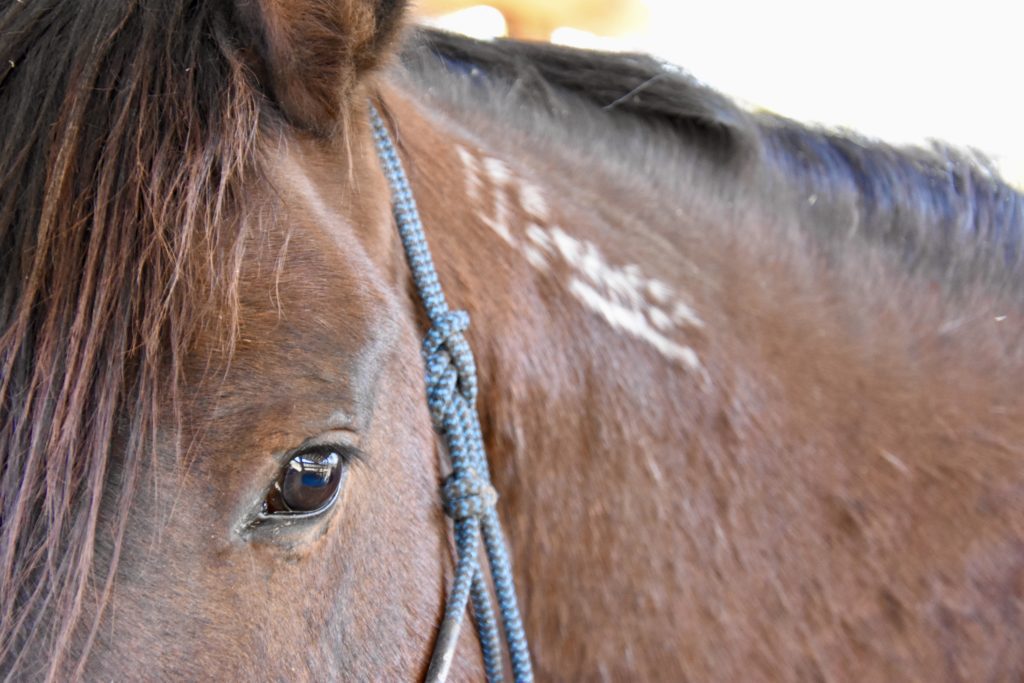
A photo of Alamo sent to us by his adopter, Erin.
In a previous newsletter, we mentioned a new addition to the WBF website, “Mustang Diaries”! A collection of stories sent in by adopters of wild horses. We teased our debut story a few weeks ago and are excited to get it kicked off this coming week.
Erin and her mustang Alamo have quite the rescue story and we are excited to give you a preview in this week’s newsletter.
_____
WBF Mustang Diaries: “Erin & Alamo”
“Hello, I’m Erin Phillips, a life-long animal lover and owner! My love for wild horses began with the “Cloud, Wild Stallion of the Rockies” documentaries I watched with my family when I was five years old. I remember the thrill of watching wild horses race across their range in freedom, then the sadness when the whole herd faced a government roundup (being removed from the wild). Wild horse bands (families) were separated from each other, and stallions would desperately fight to return to their mares and foals.
Several years after I first learned about wild horses, I began researching more and was amazed to read about the challenges they face, on and off the range. Learning about thousands of mustangs and burros either sitting in a holding pen for their entire lives or facing a horrific end in slaughter houses across the border inspired me to start a wild horse and burro rescue/sanctuary, Mustang Mission. It is my goal to rescue, train, and rehome mustangs and burros that have not been fortunate to be adopted by a kind, loving home. That is why I’m here today.
Late last year, after the terrible roundup of the famed Onaqui Herd, I decided to rescue one of the older geldings that would be likely to end up in a bad situation after adoption/purchase. After careful consideration – I knew that it was risky to rescue an older gelding as a first mustang – I chose an 11-year-old bay (#7903) with minimal white with the help of Jen Rogers (Red Bird’s Trust). He was Sales Eligible (he could be sold without limitations) which put him in great danger. The main decision-making factor for me was when Jen Rogers told me, “From knowing them from the field, I would lean toward #7903 if it were my choice – he’s a cool horse and level headed.” After hearing that, I definitely wasn’t backing down!”
_____
Be sure to keep an eye out on The Wild Beauty Foundation website later this week to read the full story of this incredible rescue.
A Q&A With Author and Photographer Carol Walker
In addition to our recent live Facebook chat with our friend and avid wild horse advocate, Carol Walker, we have asked her a few questions regarding her journey with wild horses and the creation of her upcoming book “Blue Zeus: Legend of the Red Desert”. If you were unable to join our live chat or are interested in learning more about Carol’s support of wild horses, continue reading!
You first met Blue Zeus in late 2018, after visiting the Red Desert Complex for for several years. What made you initially fall in love with this herd management area and the horses that call it home?
There are 5 Herd Management Areas in the Complex, plus 1 Herd Area, and the terrain is so varied, ranging from two mountains, Crooks and Green to the rock formations and alkali lakes of Stewart Creek and then the rolling hills of the other HMAs. And the horses are the most beautiful that I have found anywhere. I am a color junkie and the amount of flashy pintos of all different colors and the roans and the Appaloosas are really stunning. P,us the horses themselves – they are not that used to humans, which means they do not tune me out but they also do not usually run. There is a dance, and if I am lucky they will allow me near.
What type of mannerisms did Blue Zeus and his family band demonstrate, and what changes have occurred in them since experiencing a roundup and being brought to the sanctuary? Does Blue Zeus still demonstrate stallion-like behaviors despite being a gelding now?
Blue Zeus was clearly in charge of his family and would push them to stay together and to go where he wanted them, but not in an aggressive, dictatorial way but in a calm assertive way – I see this in many older stallions. I did not notice a difference in behavior when the family was initially reunited and I have not been able to see them since then.
What is your favorite thing to capture when you’re observing and photographing wild horses? Is there a certain time of day/year or part of the horses’ routines that you find the most interesting to photograph?
My favorite time of day to spend with the horses is dawn. This is the coolest time and the horses are the most active. I really enjoy photographing them running to the water and then at the waterhole because there they will often interact with other wild horse families, the bachelors running around causing trouble, the stallions posturing and showing off – it is a wonderful scene when a bunch of horses are at the waterhole together. I also enjoy sitting with them when they are having a mid morning nap, and then when everyone wakes up before they start grazing the stallions will court the mares, the babies get up and nurse, it is wonderful.
What made you particularly interested in wild horses in the first place as a photographer, and spurred you to join the cause to protect them?
When I first visited the Adobe Town horses in 2004 I immediately fell in love with them and kept going back and getting to know various families. And when I found out that in 2005 the BLM would be rounding up and removing most of them, I decided to do a book to show how beautiful they are, how uniquely suited they are to their home on our public lands, and what happens at a roundup, and what people could do to help. That was my first book Wild Hoofbeats: America’s Vanishing Wild Horses, published in 2008. I felt that if I truly loved these horses I would not just take pretty pictures of them but that I would become an advocate for them, and fight to keep them wild and free.
What is hardest about wild horse advocacy?
The hardest thing is that when I first got involved I thought we would have protected the horses and have been done in a few years. 18 years later the horses are in more jeopardy than ever before. I work on my own and I have to take time out so I don’t get burned out. So keeping the faith, keeping going in the face of such complete disregard from the BLM is tough.
Was there a specific moment that made you say “I need to turn the story of Blue Zeus into a book”? What do you hope to tell the world about Blue Zeus and the many wild horses that are facing cruel treatment by the government?
Yes it was when I heard that the roundup was scheduled – in August, 2020. I knew that Blue Zeus would be captured and removed with no hope of being returned to his home because he was living in the Herd Area that has been zoned for no horses, Arapaho Creek, despite the fact that it is smack in the middle of the 5 Herd Management Areas in the Complex. I felt that his story needed to be told and that he could represent the horses whose lives are changed forever when being removed from their homes. And I had no idea when I decided to do the book that I would run into the disaster that was Cañon City corrals and how very difficult it would be to reunite family members after being buried by the BLM’s broken system.
You describe the moment in your book, but kindly reiterate what it felt like to say goodbye to Blue Zeus and his family on the range before the helicopters descended.
It was very emotional for me. I had been observing the roundup for a few days already and I would go out into areas where the helicopters had not been yet to see if I could find horses. I knew Arapahoe Creek was next. There was never any guarantee that I would find Blue Zeus that day so I was overjoyed to see him. His family was grazing and did not pay much attention to me, but he watched me and waited for me as I walked to him. I watched him and I talked to him, telling him there was a wonderful place waiting for him, and that I would do everything I could to help him and his family be together again. I was crying and hoping that he would understand. It was really hard to leave – I watched him walk to his family, and they moved away, grazing.
You had quite a hard time locating each horse once they were in holding, do you think that the BLM makes this process purposefully difficult to deter activists and adopters from locating the horses that they have kept up with?
I had never had such a hard time locating horses before. Kathi Fine had been very helpful at Rock Springs when I was helping reunite another family in 2014 and in 2010 the now retired head of Cañon City Fran Aklee had been very helpful helping me find particular horses and my own adopted mustang Mica. But the BLM started putting out this notice in 2018: “The corrals receiving the horses from the gathers will not be taking requests from the public to hold specific horses.” I think it is just too much trouble for them to help locate horses so they just don’t. And given that they could not even feed the horses at Cañon City properly it is clearly way down their list of priorities to help people find horses – and some of the BLM at some of these facilities really hate sanctuaries.
Discuss your experiences with the BLM surrounding the saga with Blue Zeus.
Steve Leonard, head of Cañon City was particularly unhelpful. I had a number of conversations with him and it was a real fight to get the public access to any of the horses. I wrote Nada Wolf Culver, Deputy Director of BLM several times, the DC office confirmed that some of the horses I was looking for were there, but with a list of horses and trying to match tag numbers to descriptions is really hard – I knew we had to get in to see the mares in person in order to identify them.
How did you select Skydog Santuary and Clare Staples to be the ones to rescue Blue Zeus and his family? Discuss this partnership and undertaking.
I had been watching Clare’s posts and hearing really good things about her sanctuary. I met her in 2016 at a holding facility tour of Axtell, UT. I knew she liked Blue Zeus, and she mentioned that she was going to try to reunite some families. When I emailed her about Blue Zeus and his family and the roundup she immediately offered to take them. I shared ID photos with her, and started working on getting information. We worked together sharing information back and forth, and both of us went to the adoption where Blue Zeus was offered, and then a month later went into Cañon City and I identified the mares for her.
Considering the current news and investigation around the Cañon City holding facility, do you believe the condition that Blue Zeus and his family were in after being held there was a result of unhealthy and unethical conditions as well?
Yes absolutely. I was shocked at the conditions I found there in August 2021 and had already been horrified by how thin all the stallions being offered at the July event were. When in the facility there were so many thin mares and yearlings. Very little food on top of the mud. I had never seen this happen at this facility before. Where was the hay? Why weren’t the really thin horses separated out so they did not have to fight for food? These horses came off the range as body score 5s yet here they were, starving.
From what you have observed or experienced, how young has the BLM gelded colts versus allowing them to be adopted by major sanctuaries and gelded afterward? Is this humane in your opinion?
Steve Leonard refused to let either Skydog or Return to Freedom take colts without being gelded despite the fact that they were 3 months old or younger. One colt that initially thought was Clare’s died horribly tearing himself open on a fence trying to get to his mother. Turns out he was one of the foals going to Return to Freedom. No way on earth should 3 month old foals be gelded – it would have been so easy for the sanctuaries to do it when they were a year old and have BLM come inspect – as they have done in the past. My Adobe Town mustang Mica was 7 months old when I adopted him from Cañon City in 2011 they gave me a “gelding certificate” for $25 to help pay for my own vet gelding him, which I did when he was 1 year old. This casual cruelty is absolutely unacceptable.
In one sentence, describe the first time you saw Blue Zeus.
I spotted a gorgeous, proud blue roan looking over at his family – and I had to get to him to see him – he was so beautiful.
In one sentence, describe the moment you knew he had been rounded up.
My friend Angelique called me and told me and my heart fell and I felt like I had been struck.
In one sentence, describe experiencing Blue Zeus and his family being reunited and re-discovering their freedom again at Skydog Sanctuary in Oregon.
It was a joyful and sad occasion – Blue Zeus knew his family, ran to them, and they knew him, but I mourned for their time apart as I was glad they were together.
What made you decide to personally adopt Helios and how is that journey going?
I fell in love with Helios the minute I saw him, a gorgeous little foal that his mother Hera was trying to wake up. I had not initially planned to adopt any horses personally, but as I thought about him, I decided to adopt him because I did not want him to end up staying at Cañon City and my older mustang Cremosso had lost his brother Claro two years ago to a severe colic and he had not been the same since then, he has been a sad boy, and he has always loved youngsters. I thought all of us could use a little hope, a sweet little colt.
Is there anything you learned personally through following Blue Zeus that could educate others on wild horses?
The biggest thing I learned was to listen to wild horses. I could tell if they were going to rest, and how far away was comfortable for them. I watched them go to find water, and graze, and watched them play and groom each other. The longer I spend with wild horses the more I can tell their moods and behavior. And the day they were reunited and everyone left the pasture except me and Blue Zeus walked up to me, I felt all the thanks I could ever need.
What do you believe is the biggest concern facing wild horses today, and what can we do to help them?
The biggest concern is the competition for our public lands against the livestock grazing industry and our Secretary of the Interior not being willing to listen to anyone’s pleas to help our wild horses. Right now lawsuits are our most powerful tool to fight the BLM and stop them from using cruel, horrific and dangerous methods of birth control and from zeroing out entire herds.
Is there a particular HMA you’ve been visiting recently? How do the horses there differ from those in the Red Desert complex?
I have been visiting the Red Desert Complex but also Salt Wells Creek recently. The most extraordinary thing about the Salt Wells Creek horses are the curlies! They have curly, hypoallergenic coats, curly manes and forelock and for the extreme curlies, very little tail. They are very laid back in personality generally and some of the stallions like Bubba, a favorite black curly, look like the horses the knights used to ride and the ground thunders as they run by! They tend to be black, brown or sorrel but there is a dappled grey curly and a cremello!
You’ve mentioned you’re big on color, what color/pattern have you been most excited to see on a wild horse?
Just two weeks ago I found the most extraordinary color on a wild horse – a roan pintaloosa stallion – pinto, roan and Appaloosa, in White Mountain. He is an amazing horse.
You’ve written a pretty large collection of books now as well as provided photographs to tell their stories, what have you learned through the process of bringing these books to life?
I love sharing stories with people about the wild horses and showing them how beautiful our wild horses are. When people give my books as a gift to others, I feel honored that they think it will strike a chord with their friend or family member. People love horses and I think seeing photos of them in the wild brings that experience of freedom to them, and helps people see how precious our wild horses are.
What is a tip you’d give others who are wanting to follow wild horses and keep track of their families and journeys?
Get out there now while we still have wild horses. If you can find a herd or herds you can visit again over time – it is so rewarding to get to know individual horses and their families.
Just for fun, if Blue Zeus was a person, who would he remind you of?
Robert Redford.
Where can you purchase “Blue Zeus: Legend of the Red Desert”?
On my website http://www.WildHoofbeats.com
Thank you Carol!
_________
Blue Zeus & Skydog Sanctuary
Blue Zeus and his family are now living at Skydog Sanctuary in Oregon, where you can make a donation to help other wild horses who need rescue or care.
Photograph by Chad Hanson
Glimpse of Wild Beauty
This photo of a couple beautiful wild horses, titled “The Language of Touch” was captured by Chad Hanson. These two horses demonstrate the close bond that horses share in the wild.

A Quote to Graze On
“Whoever you are, no matter how lonely, / the world offers itself to your imagination, / calls to you like the wild geese, harsh and exciting — / over and over announcing your place / in the family of things.”
-Mary Oliver
Our wild world ignites our imagination each time we step foot into it. We cannot let our wild horses become a figment of imagination.

Thank you for being a supporter of wild horses, and protecting the wild beauty of our world.
– The WBF Team
#istandwithwildhorses #wildbeautyspirit
Have an idea for a story or a tip for us?
Email [email protected]
Are you a wild horse photographer who would like your work featured in our newsletter or social media pages?
Email a ZIP or link to your photos, along with a short written approval to [email protected]!
Join Us On Our Journey. We’d love to stand beside you.
WBF Facebook
www.facebook.com/wildbeautyfoundation
WBF Instagram
www.instagram.com/wildbeautyspirit
WBF Twitter
www.twitter.com/wildbeautyorg
